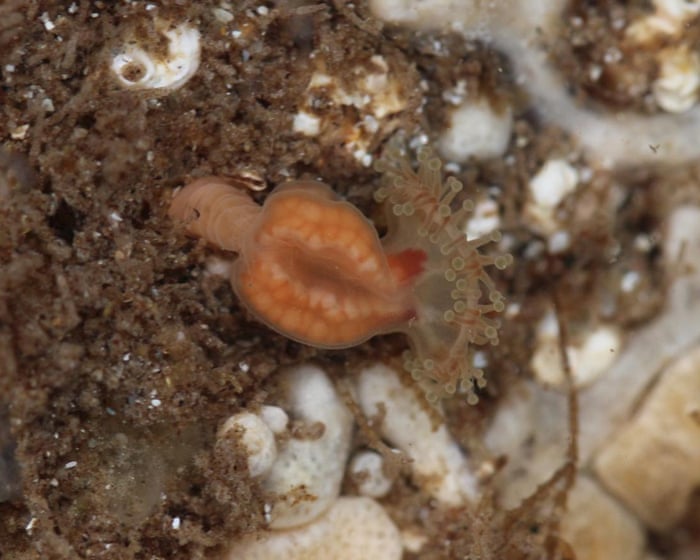For nearly 50 years, the stalked jellyfish Depastrum cyathiforme—which looks like a thistle flower—had disappeared without a trace. Last seen in 1976 off the coast of Roscoff in northern France, scientists feared it had gone extinct worldwide.
But a holidaymaker exploring rock pools on South Uist in Scotland’s Outer Hebrides made an incredible discovery: four of these jellyfish, which cling to rocks like anemones. The finder also captured the first-ever photographs of the species, previously only known from old drawings and paintings.
The rediscovery, reported by British Wildlife magazine, was confirmed when a follow-up search found another individual, raising hopes that a stable population exists on the island.
In the 1800s, this jellyfish—nicknamed the “goblet lucernaria” by marine biologist Philip Henry Gosse—was rare but occasionally spotted in British waters. By the mid-20th century, it had vanished, with the last recorded sighting in Devon in 1954.
Neil Roberts, who made the initial discovery, described his surprise when his photos matched only historical illustrations. “I had a niggle of doubt,” he said, but was “well chuffed” when experts confirmed his find.
Guy Freeman, editor of British Wildlife, later verified the sighting during a summer search. “Seeing Neil’s photos was like encountering a ghost,” Freeman said. “This creature, known only from old artwork, was suddenly real. It’s encouraging that it’s still there, but we need to check if it survives elsewhere.”
Stalked jellyfish, related to true jellyfish and anemones, are typically under 5cm tall and attach to rocks or seaweed. Of the 50 known species, 10 are found in British and Irish waters.
Allen Collins, a jellyfish expert at the Smithsonian, called the find “remarkable,” adding, “We now know this rare species still exists. I hope more will be found soon.”
Christine Johnson of Outer Hebrides Biological Recording said, “Discovering a species once feared extinct is extraordinary. It shows how local naturalists contribute to our understanding of biodiversity.”




